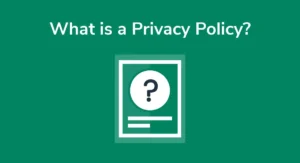
A privacy policy outlines how a business or website collects, uses, stores, and protects personal information from its users. It is required by law for many online platforms, especially those that handle sensitive data. Here’s a basic breakdown of the key elements often found in a privacy policy:
1. Introduction
Overview of the Policy: An explanation of the purpose of the privacy policy.
Contact Information: Details on how users can get in touch with the company for privacy-related concerns.
2. Types of Data Collected
Personal Information: Information such as name, email address, phone number, and billing information.
Non-personal Data: Data that doesn’t directly identify individuals, such as browser type, device information, and IP address.
Sensitive Data: Information like payment details or health data, if applicable.
3. How the Data is Collected
Directly from Users: When users create accounts, fill out forms, or interact with the website.
Automatically: Via cookies, web beacons, or other tracking technologies.
4. How the Data is Used
For Services: To provide products, services, or customer support.
For Marketing: To send newsletters, promotional emails, or advertisements.
For Legal Compliance: To fulfill legal obligations and respond to requests from authorities.
5. Sharing of Data
Third-Party Services: Whether the company shares data with service providers, partners, or affiliates.
Legal Obligations: Whether the company may share data for legal reasons, such as compliance with a court order.
6. Data Retention
How Long Data is Stored: Information on how long user data will be kept and the reason for retaining it.
7. User Rights
Access: Users can request access to their data.
Correction: Users can request updates or corrections to their information.
Deletion: Users can ask for their personal data to be deleted under certain circumstances.
Opt-out: How users can unsubscribe from communications or disable cookies.
8. Data Security
Measures Taken: A description of the security measures in place to protect user data from breaches or unauthorized access.
9. Cookies and Tracking Technologies
Cookie Usage: Explanation of the types of cookies used and how users can manage or block them.
10. International Transfers
Data Transfer Across Borders: If applicable, details about how data may be transferred across borders (e.g., from the EU to the US) and how it will be protected.
11. Changes to the Privacy Policy
How Users Are Notified: Information about how changes to the privacy policy will be communicated to users.
12. Children’s Privacy
Age Restrictions: If the service is directed at children, or if users under a certain age are restricted, this section outlines how their data is handled.
If you’re looking to create a privacy policy for a specific service, it’s always a good idea to consult with a legal professional to ensure that it meets the requirements for your business and jurisdiction.
